Collection of Symbols of Religious Peace in Art Exhibit
Kolumba – Köln
Kolumbastraße iv, Köln
Nordrhein-Westfalen, Germany
closed on: Tuesdays
Museum Type: Art
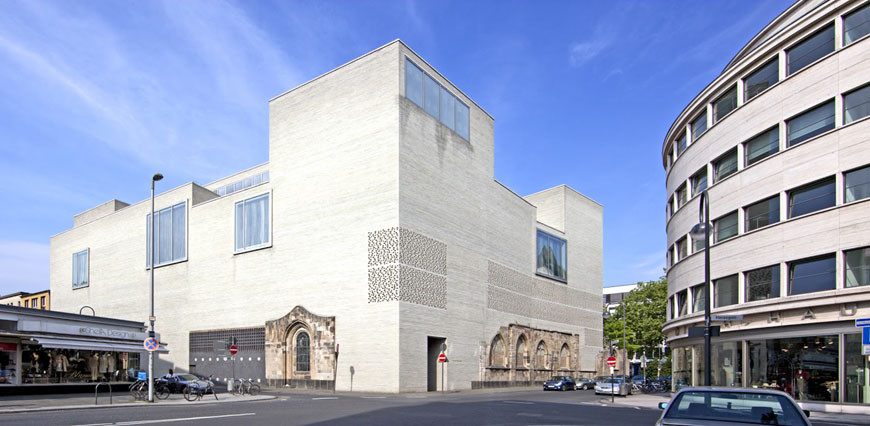
Kolumba is a museum on ancient and modern art in Cologne housed in a famous edifice designed by Swiss architect Peter Zumthor.
History
The Museum of the Archdiocese of Cologne (German: Kunstmuseum des Erzbistums Köln), the precursor of Kolumba, was founded in 1853 as a museum dedicated to religious art, from Early on Christian Times onwards, housed in the former Archbishop's Palace and next to the urban center's Cathedral.
The museum was about destroyed, together with a large part of the city, past the Allies' bombings during Globe State of war Two. Nevertheless, most of the collection, previously evacuated in the Westerwald woods, survived the war and the museum reopened in 1954, although in rather inadequate and insufficient rooms.
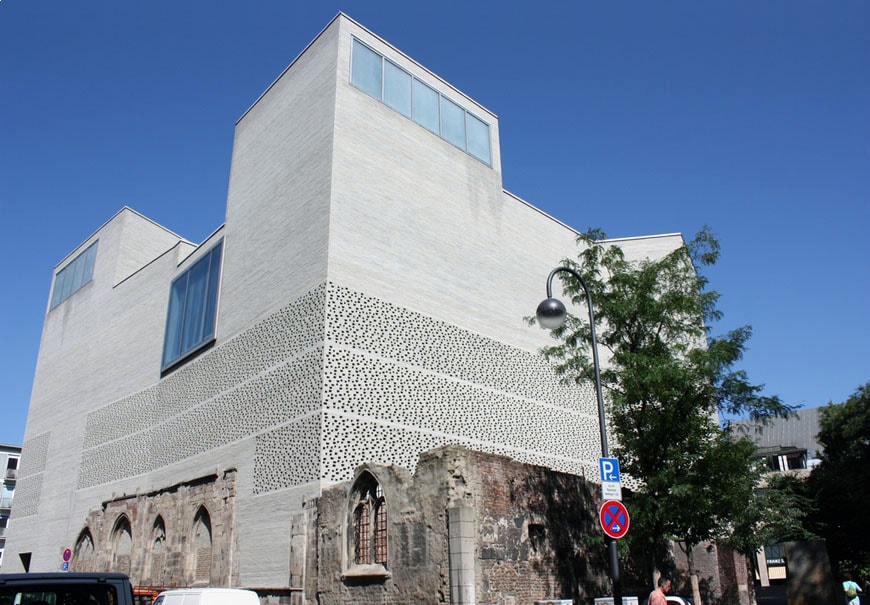
The Kolumba Museum, photo past Ralf Neugebauer

The city of Cologne in 1944, aeriform photograph; the site where the Kolumba is at present located in on the right of the Cathedral, ane of the few building which remained relatively undamaged subsequently the bombing

Aerial view of the museum's site today, photo by Lutz Szepoks
Peter Zumthor's building
In the early 1990s, the Diocese decided to build a new home for the museum and, in 1997, organized an international design competition, somewhen appointing Swiss architect Peter Zumthor (b. 1943) for the design of the new building. The site chosen was that of the medieval Chapel of St. Columba (High german: Marienkapelle St. Kolumba), not far from the Cologne Cathedral. Too, the original chapel was badly damaged during the war and replaced by a modern chapel in 1950, only parts of the original Romanesque-Gothic structure were retained.
Completed in 2007, Zumthor's project skillfully combines contemporary architecture with the remains of the old medieval constructions, including those of the St. Columba chapel from which the museum took its new name, and the new chapel built in the 1950s.
Although with a quite articulated footprint, the building designed by Zumthor is definitely linear in peak; the overall effect is that of a gimmicky compages subtly reminiscent of the historical aspect of the old city of Cologne, with its narrow merchant houses.
The plans were designed having in mind the circuitous ensemble of functions of the museum, which accommodates galleries for both ancient and modern art, temporary exhibition rooms, a library, excavations where remains of the original medieval buildings tin can be visited, places of worship, and an open up-air contemplation courtyard and garden located in the middle of the edifice.
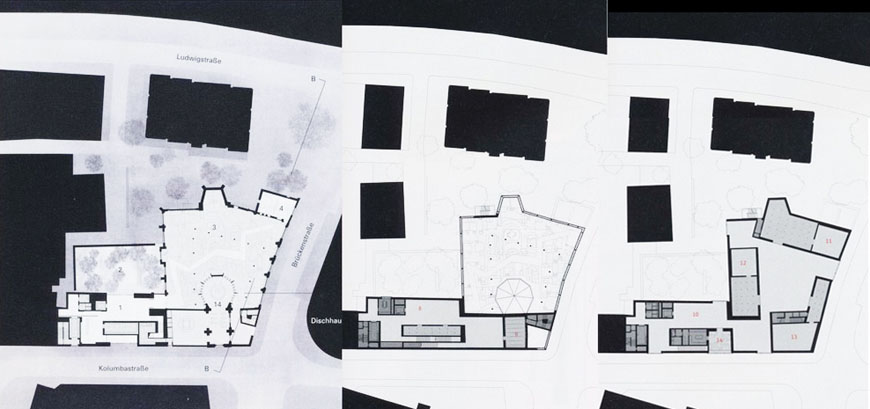
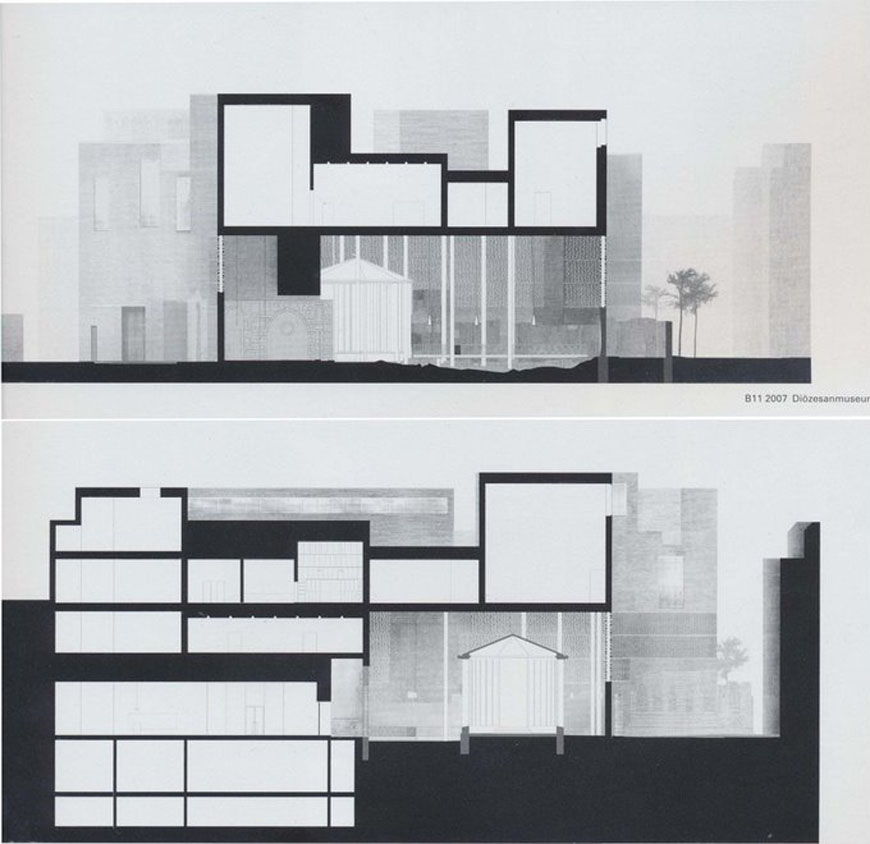
Kolumba, floor plans, and sections; images © Atelier Peter Zumthor & Partner
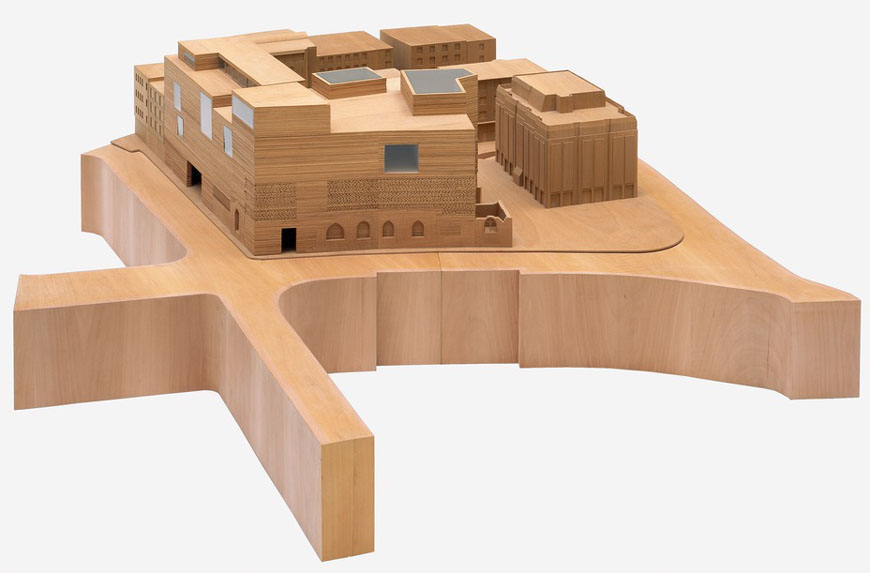
Architectural model of the Kolumba, © Dam und Peter Zumthor, Dumeng Raffainer, photograph Hagen Stier
Encompassing a total floor area of 1,750 square meters / 19,000 square anxiety, the sixteen exhibition rooms of the Kolumba are usually dim-lighted, nearly private, gray spaces with polished physical floors, conceived to underline the exposed artworks, and providing a general sensation of quietness and timeless permanence.



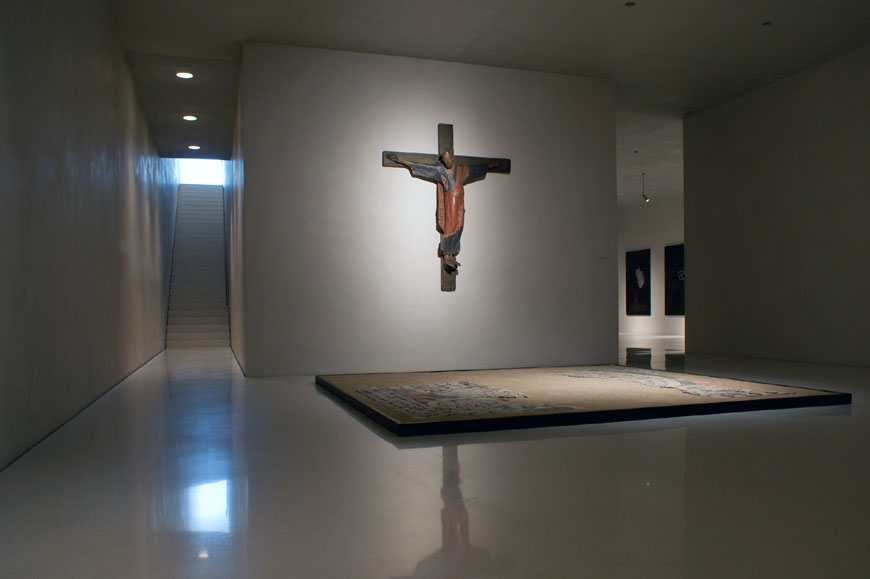
Interior views of the museum, photos by fcamusd
Forth with an art museum, the Kolumba was indeed intended to be an ode to peace and life (in Latin, columba ways dove, a traditional Christian symbol of peace).
The use of materials is truly notable, Zumthor conceived perforated brickwork facades, made in light-grayness bricks handcrafted in Denmark, as a means to comprise the medieval remains into a coherent whole, therefore establishing a dialogue between old and new architecture.
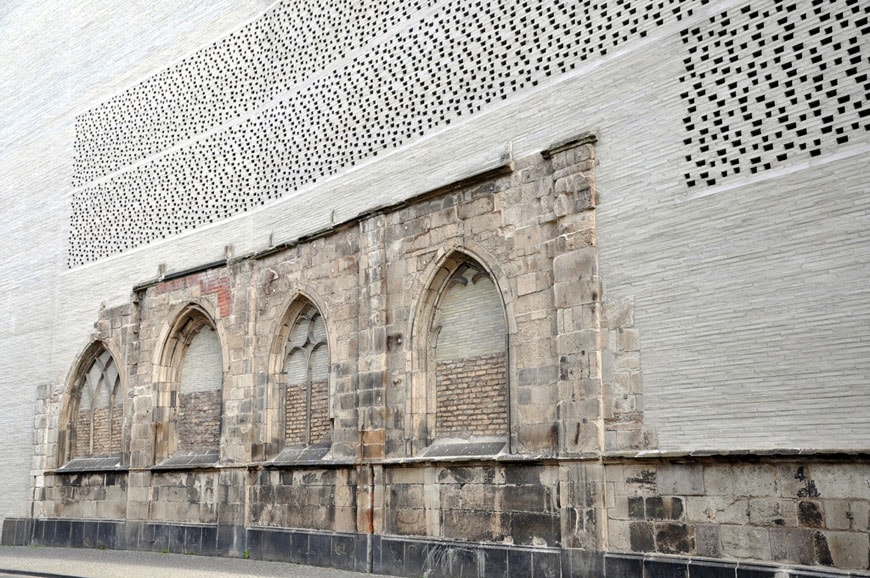

Photos by Jaime Silva
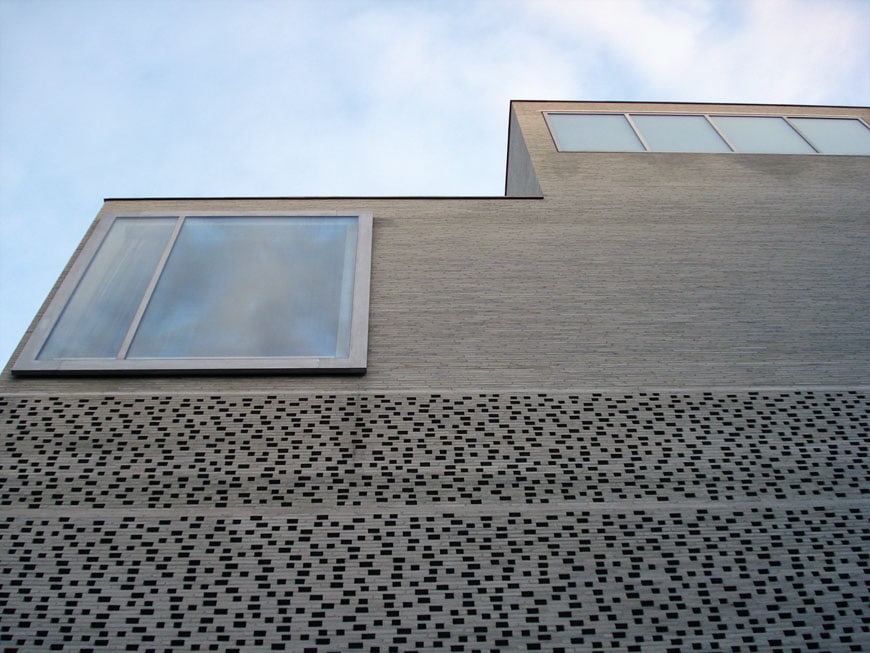
Photo by Timothy Dark-brown

Facade item, photo by Ben Scicluna
Art collection and exhibitions
The drove of the Kolumba is equanimous of paintings, sculptures, drawings, prints, textiles, dresses, precious objects and jewels, manuscripts, and works of decorative arts, dating from artifact to the nowadays but with a strong focus on medieval art from German-speaking countries.
Modern and gimmicky pieces in the museum'due south collection include works by Joseph Beuys, Paul Thek, Louise Bourgeois, Leiko Ikemura, Rebecca Horn, Attila Kovács, Wolfgang Laib, Thomas Lehnerer, Joseph Marioni, Agnes Martin, Richard Serra, Chris Newman, Richard Tuttle, Jannis Kounellis, and Darío Villalba, among others.
Only a few pieces from the collection are permanently on view, while the museum displays most of its patrimony through long-term temporary exhibitions which juxtapose ancient and modern artworks side past side, following changing subjects and viewpoints, and creating a dialogue between the collection and the memory of the observer. Sometimes the museum as well organizes solo exhibitions dedicated to major artists, such as those on Richard Serra (1997), Andy Warhol (1999), Leiko Ikemura (2012), and Bruno Jakob (2014).

View of the museum's galleries, photo by Christian Wendling

A vestment belonged to Cardinal Josef Frings, photograph past René Spitz

Photo by fcamusd

Photo by Clara Alim

The medieval remains, the 1950 chapel and the new building side past side, photo by Jose Fernando Velasquez

View of the "contemplation garden", photo by fcamusd
Cover image: view of the museum from the south-eastward, photo past Hélène Binet, courtesy of Kolumba
Source: https://www.inexhibit.com/mymuseum/kolumba-art-museum-cologne-peter-zumthor/
0 Response to "Collection of Symbols of Religious Peace in Art Exhibit"
Post a Comment